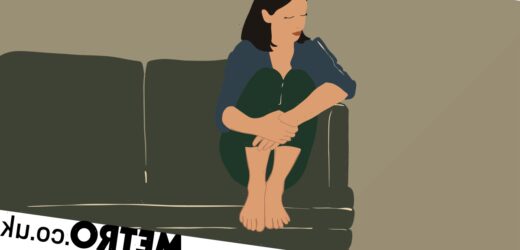Toxic behaviour can come in many forms – whether it’s gaslighting, love bombing, a desire for control or disrespect.
Identifying this within a romantic relationship is the first step to making a change, before making the decision to leave.
When this happens, all kinds of emotions are thrown to the surface – and recovery and healing can feel like an overwhelming process.
Often this involves dealing with emotional trauma and reflecting on your experience, as well as putting your mental health and well-being first – after being surrounded by a toxic individual for so long.
So what does this healing process look like?
‘Recovery from a toxic relationship can take many forms, and the person will often need support in order to walk through the steps of healing,’ explains Heather Garbutt, a relationship psychotherapist.
This may come from family or friends or from the help of a professional, like a therapist.
Heather outlines a few things to do after exiting a toxic relationship, to help you recover mentally, emotionally and physically.
Identify the toxic behaviour
Perhaps one of the most important initial things to do is to specifically identify the toxic behaviour that you’ve experienced – as this will also help with accountability.
Heather says: ‘One of the very first steps is to name the toxic behaviour and place the responsibility for any abuse straight back to the abusive person – not carry it yourself.
‘The person behaving in a toxic way will blame the victim for the abuse itself – and the victim needs to name the abuse clearly, who is responsible and then work to tackle the internal voice inside them that says it was really their fault.
‘Remember, this internal voice is actually the voice of the abusive living rent-free in your head and costing your mental wellness – this will take time to let go of because you have probably come to believe it too, however it is an extremely important step.’
‘Three Bs’ that may indicate toxicity, according to Heather:
- Behaviours (ways the person acts and things they do/don’t do).
- Beliefs (belief systems that underpin the way they act and think.)
- Boundaries (how respectful they are of your boundaries, and of your separateness). People that are abusive will violate the boundaries of others. Early on in a relationship this can look like:
- Getting close and intimate with you very quickly (like grooming).
- Wanting to do everything together.
- Wanting access to your body – even if you are not interested, or tired.
- Wanting to have a very strong boundary around the relationship – that excludes everyone else (especially people that are important to you).
- Not respecting your ‘no.’ This can be very obvious or it may be more subtle – for example when you say no they may spend a lot of time “jollying” you to change your mind, or play the victim to get you to change your position on something.
Establish boundaries and safety
The aftermath of any breakup can be a confusing time, let alone the fall-out of a toxic one.
So it’s a good idea to establish any boundaries that were crossed – to give yourself control again.
Heather says: ‘Understand where you “start and stop’ and know that you have the right to be in charge of your body, your money, your time and your choices.’
Reconnect with loved ones
Establishing a key support system is going to be crucial for recovery.
So Heather suggests socialising and seeing family and friends again – especially those your previous partner didn’t want you to see, or tried to turn you against.
Toxic relationships can make people feel very isolated, so spending time again with people who love and care for you is essential.
Get to know yourself again
It’s easy to lose yourself in a toxic relationship – so take some time to regain your sense of self and connect with your feelings and desires.
Heather says: ‘This can take time and can take many forms.
‘Many people get back in touch with who they were before the toxic relationship and think about what they enjoyed – and start getting back into those things. Choosing for yourself is the most important thing.
‘Get in touch with your rights as a person – for respect, love, appreciation, recognition and value.’
Be angry at the abuser – but be kind to yourself
Heather stresses that getting angry is perfectly normal and this can be used as a fuel for change and can help with closure.
But it’s also important to not be angry at yourself.
Instead, practice both self-care and self-love – and know that you’re not alone.
Seek any additional support
Speaking to a professional might help if you’re struggling with the aftermath of a toxic relationship. It could also give you a chance to talk through any trauma.
It’s worth pointing out there are lots of services and support networks that can also help.
Heather suggests Women’s Aid as well as The Group Hug as a resource for anyone separating.
Be aware of oxytocin:
Heather also stresses to be aware of the hormone oxytocin and how it can make you feel following a breakup – as it might make you see things with rose-tinted glasses.
‘There is also a tricky hormonal issue,’ she continues.
‘When we leave, we can miss the person we originally fell in love with.
‘Oxytocin can be triggered by those memories and feelings so we can often feel longing.
‘Abusers often play into this by blowing hot and cold, that cycle of love bombing, making you feel you’re the most important person in the world to them which reinforces attachment. Once they feel they’ve got you, the abuse will begin again.’
As a result, it’s a good idea to cut off all communication from your previous partner.
Do you have a story to share?
Get in touch by emailing [email protected].
Source: Read Full Article



